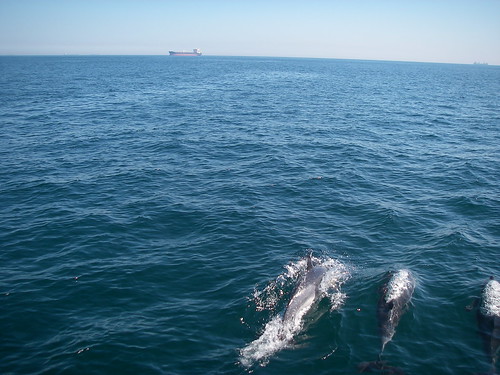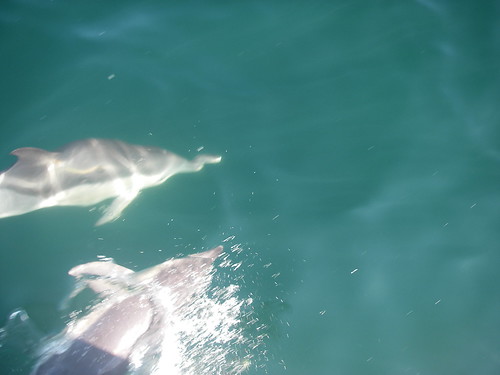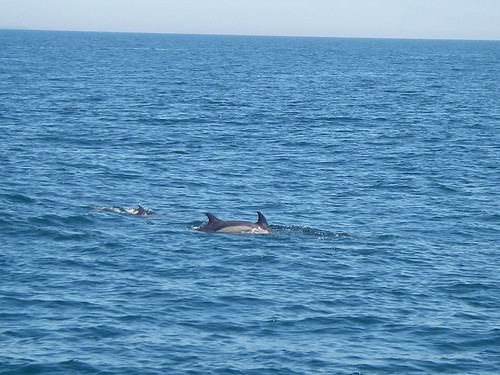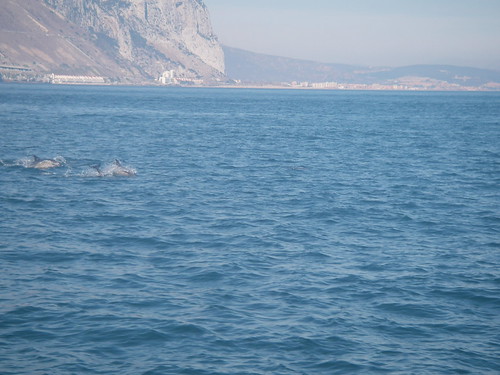Day of the Dolphins
Bay of Algeciras, 3rd October 2012

I’d been watching the wind forecasts for days, and finally it looked like conditions in the Strait of Gibraltar were calming down. My mind was made up. I left Malaga and made straight for Tarifa where—weeks earlier—a persistent sea state of 3-4 put paid to my plans to go whale watching.

For the next fifteen minutes we passed through what I can only describe as a ‘dolphin zone’ with hundreds of animals surfacing all around and ahead of us. The bay was boiling! Somewhere in the mêlée I saw a sunfish floating just below the surface, like a big, fat pale pancake. I stared at it, gobsmacked, and completely forgot to take a picture. The dolphins were scattered all around us, although a few groups were swimming fast in some direction or other, jumping frequently. About ten minutes after we left the ‘dolphin zone’ we came across another school of perhaps a dozen animals, with several mother-calf pairs among them. They were travelling steadily west and not engaging with the boat (which kept a respectful distance).

Although hundreds of dolphins were concentrated in such a small area, they clearly displayed different behaviours. I would have loved to see what they got up to underwater. Did they all congregate around a big buffet of fish and were either off playing or moving away after eating their fill?

The oval near the tip of Gibraltar marks the area where I think we’ve seen most of the dolphins, but of course this is only a guess. I don’t know the real extend of the group or how far out they were. It is great to see that—after all these years—the dolphins are still there, and in such numbers (despite two outbreaks of morbillivirus). But the Bay of Algeciras is one of the most polluted waters in Europe and the Strait of Gibraltar is one of the busiest shipping routes. Moreover these are international waters so that declaring it a marine park is practically hopeless.

Still, firmm is actively engaged in conservation and research and I’m delighted to have gone out with them. It has taken a long time for the research community and the world at large to notice the cetaceans in the Strait of Gibraltar. While dolphin watching has started in Gibraltar in 1969, it wasn’t until the nineties that the first research programmes have been put into place (e.g. Hashmi D. D. K., Adloff B., 1991. Surface frequency of cetaceans in the Strait of Gibraltar. In: P. G. H. Evans (ed.), European research on cetaceans, 5: 16-17—this was the time before the internet and I can’t find the document, although I think I have the actual journal!).
 Tags: Spain, Travel, Whale watching, Tag Index
Tags: Spain, Travel, Whale watching, Tag Index